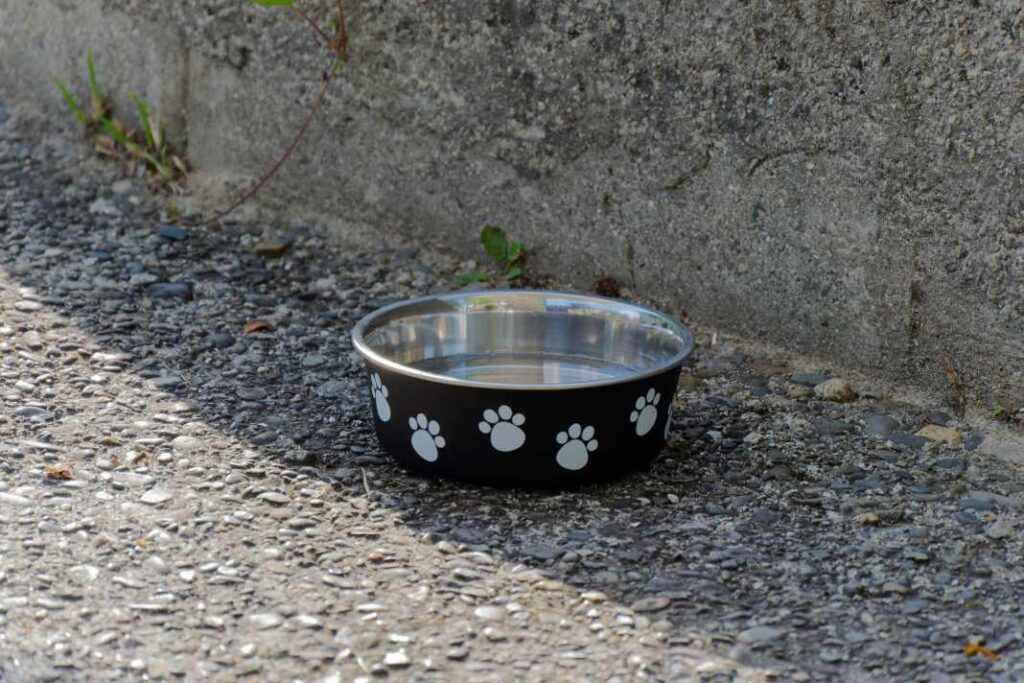Discover the significance of keeping your dogs water bowl full, including the importance of water for dogs, their hydration needs, and valuable tips to maintain their overall health and well-being.
Introduction: Understanding the Water Needs of Dogs
Water is a crucial component of a dog’s diet, essential for various bodily functions and overall well-being. It plays a vital role in regulating body temperature, lubricating joints, aiding digestion, and transporting nutrients in dogs. Pet owners have the responsibility to ensure that their dogs have access to clean and fresh water at all times to maintain their health.
Adequate hydration is paramount to prevent dehydration, which can have severe health consequences for dogs. Dehydration can lead to issues like kidney damage, hypovolemic shock, and even death if not addressed promptly. Factors such as age, breed, size, and activity level can influence the amount of water a dog needs to consume daily for optimal health.
Importance of Keeping Your Dogs Water Bowl Full
Water is not just a thirst quencher for dogs; it is essential for their overall health and well-being. For example, without enough water, dogs can suffer from issues like kidney damage, hypovolemic shock, and even death.
It is crucial for pet owners to understand the significance of water in regulating body temperature, aiding digestion, and ensuring the proper functioning of a dog’s body systems.
Dehydration in dogs can lead to serious health complications, underscoring the importance of monitoring and ensuring that dogs have access to an adequate amount of water daily. By recognizing the key role of water in a dog’s health, pet owners can take proactive steps to provide for their furry companions’ hydration needs.

How Much Water Dogs Need
Dogs generally require about 1 ounce of water per pound of body weight daily to stay adequately hydrated. However, individual variations may occur based on factors such as diet, activity level, and environmental conditions.
Dogs on dry kibble diets may need more water compared to those on wet or gently cooked food due to the varying moisture content of their diet. It is particularly crucial to provide sufficient water during hot weather, periods of exercise, or for dogs with specific health conditions that increase their water needs.
For instance, a 50-pound Labrador Retriever would need approximately 50 ounces, or about 6 cups, of water per day to meet its hydration requirements. Monitoring water intake and ensuring access to fresh water at all times are key to preventing dehydration and promoting optimal health in dogs.
Tips for Keeping Dogs Hydrated
One effective way to ensure that dogs stay hydrated throughout the day is by having multiple water stations in different areas of the house. This encourages dogs to drink water regularly and prevents them from becoming dehydrated.
Additionally, cleaning water and food bowls daily is essential to prevent bacterial growth and ensure that dogs have access to clean and fresh water. Pet owners can also consider carrying a portable water bowl when traveling or going for walks to offer water to their dogs conveniently.
By implementing these hydration tips, pet owners can help improve their dog’s hydration levels and overall well-being.

Signs of Dehydration in Dogs
It is crucial for pet owners to be aware of the signs of dehydration in dogs to address any potential issues promptly. Signs of dehydration may include sunken eyes, dry gums, and a sticky saliva texture.
Additionally, dogs experiencing dehydration may exhibit symptoms such as excessive panting, lethargy, and decreased appetite. Monitoring changes in a dog’s water intake, urination frequency, and overall behavior can aid in early detection of dehydration for timely intervention.
For example, if a dog shows signs of dehydration such as dry nose, loss of appetite, and reduced energy levels, it is essential to offer water immediately and consult a veterinarian if the symptoms persist.

Factors Influencing Water Consumption in Dogs
Various factors can influence a dog’s water consumption needs, including breed, age, activity level, and environmental conditions. For instance, different dog breeds have varying water intake requirements based on factors such as coat type and size.
Health conditions like diabetes and kidney disease can also impact a dog’s water consumption requirements, necessitating adjustments in their hydration management. Aging dogs and puppies may have specific hydration needs that require monitoring and adjustments to ensure their well-being.
Understanding these factors and their influence on a dog’s water intake is crucial for pet owners to tailor their hydration strategies accordingly.
Conclusion: Ensuring Optimal Hydration for Your Canine Companion
Maintaining proper hydration levels in dogs is a fundamental aspect of responsible pet ownership, contributing to their overall health and longevity.
By recognizing the importance of water, monitoring water intake, and being vigilant about signs of dehydration, pet owners can ensure that their dogs lead healthy and happy lives.
Consulting with a veterinarian for guidance on specific hydration needs and strategies can further help tailor a hydration plan that suits an individual dog’s requirements.
Warning Signs: What Your Dogs Increased Thirst Could Really Mean for Their Health

Learn how to monitor your furry companion’s water intake and determine when it’s time to seek veterinary advice, ensuring their optimal well-being.
Being proactive about your dog’s health involves more than just routine check-ups and vaccinations; it also includes paying close attention to their daily habits, such as water consumption. Monitoring your dog’s water intake can provide early indications of health issues, making it easier to address potential problems before they escalate.
For instance, a sudden increase in thirst can be a sign of diabetes mellitus in dogs, where the body fails to regulate blood sugar levels, leading to excessive urination and, consequently, an increase in thirst.
Continue reading: Warning Signs: What Your Dogs Increased Thirst Could Really Mean for Their Health




